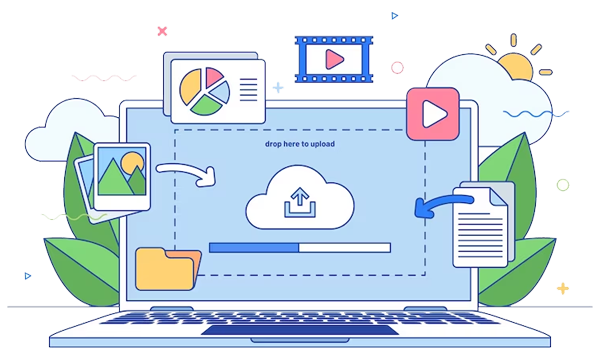Blog
MT to MX Migration: Better Payment Demands for Better Data

Speed, innovation, and standardization are the three magical words that help sustain the payment industry. Since the fintech world seems to be encountering a turning point with the migration of these payment messages from the current MT format to ISO 20022, how one capture all these features in every transaction? The answer is the MT to MX migration.
When the untrained eye looks at the new proposed ISO 20022 messages standards, the whole structure resembles a gibberish. There is a standardized way that helps those untrained eyes start picturizing the exact information that needs to be incorporated.As per the reports published by McKinsey’s annual Digital Payments Consumer Survey has represented the steady adoption of real-time payments and digital wallets by US consumers, with 2019 results signalling a potential inflection point. It also documented the need for the standardization of payment messages to increase the speed of transactions and eventually minimize the risk involved with miscommunication between banks when enormous sums of money are involved.
Future awaits for Financial Institutions with ISO 20022 Migration

Financial institutions find themselves in an uncertain world. The older styled ISO 15022 has been replaced by ISO 20022 to make the message standard centralised. These message standards are used by the SWIFT members comprises non-bank financial institutions, money brokers, banks, clearing systems, corporates, and banks. In fact, it has been discovered that there some service providers (outside SWIFT members) started adopting SWIFT FIN messages for the services they offer to their customers.
These service providers have also started investing to support ISO 20022 message format to streamline all the transaction processing standards. After all, the lack of a standardization process minimizes the speed at which transactions need to be processed.
MT to MX Migration Perplexities

If the financial institutions deal with the old MT category 1, 2, and 9 messages, this is high time to start riding on these new message standards. The financial institutions in Europe, South America, Europe, and Asia have adopted the MX migration standards. There are chances that some messages will enter banks with the MT formats and MX formats, demanding the parsing of the MT messages and identifying any truncated details from the MX messages.
The new ISO standard workflow will expedite the process not on the payment processes but also in cash management, reconciliations, liquidity management, confirmation, and other related functions. Thus, it is important to define the messages of MX migration properly and understand the proper routing to, processing by, and the back-office/front-end applications to reconfigure the system to match.
Big Data Bigger Picture

ISO 20022 messages encompassed much bigger data than the ISO 15022 messages. If ISO 15022 is 1000bytes, the equivalent ISO 20022 is considered at 4000 bytes in length. The financial institutions would require big storage capacity on a strict like-for-like basis to store data structurally.
Let’s take one of the critical data elements in any payment processing of the beneficiary (payee or creditor):
His properly structured data paves the way to deliver the money on time and the bank to avail the benefits from the reduced cost by mitigating manual processing. The accurate information also allows the compliance and risk managers to comprehend the information explicitly movement of money and how it should be handled.
Unstructured Vs Structured Data

The ISO 150022 has a lot of unstructured information that needs to be structured properly to represent the rich data in ISO 20022. Since the data provided by the beneficiary or payer, the payment can be initiated through multiple channels as per the customer requirements.
These channels can be treasury portals, mobile apps, paper forms, ERP machine-to-machine, eBanking, teller systems, and much more. In order to make the data compatible with the ISO 20022, all these pieces of information need to be modified to capture and analyze the correct payment transaction.
On the contrary, the details of the debtor will be provided by their bank’s own records. The bank’s database will recheck the customer’s name and its related information to initiate the transaction.
But what if data remediation is required. If all these perplexities happened, the ISO 20022 format won’t execute properly to have the structured party details. That’s why it is advised to clearly look at the perplexities and the intentions to coordinate the rapid transformation to the mandatory structure.
What's the timeline to implement the mt to mx migration?
Swift has announced the ISO 20022 or MX migration to bridge cross-border financial communication between financial institutions and their customers. All the financial institutions are required to start adopting these new proposed message standards by 2025, beginning in November 2021, and your institution needs to be ready. After this period, the MT messages will be fully retired from their designation.

How can ECS Fin help you with the MT to MX Migration?
As a matter of fact, innovation has become a necessity for the payment industry because it allows you to act, do and think better. ECS Fin advises all the financial institutions to adopt ISO 20022 migration to stay updated with the payment processing standards and refresh the legacy system. We provide a messaging service to ensure a strategic migration to ISO 20022 standards with its IMS solution.
Our solution addresses all the complexities of the ISO 20022 migration programs with minimal disturbance to the existing systems. IMS message hub doesn’t only respond to the migration from MT to MX, but it also involves receiving requests from the member banks within the country for moving money and securities through various channels.What’s more, it rapidly connects with external entities using simple parameter settings that can be configured with a user-friendly interface. Convert data from any format to any format using message mapping protocols that can address differences in data output/input layouts.Let ECS Fin help you discover the new road ahead!



